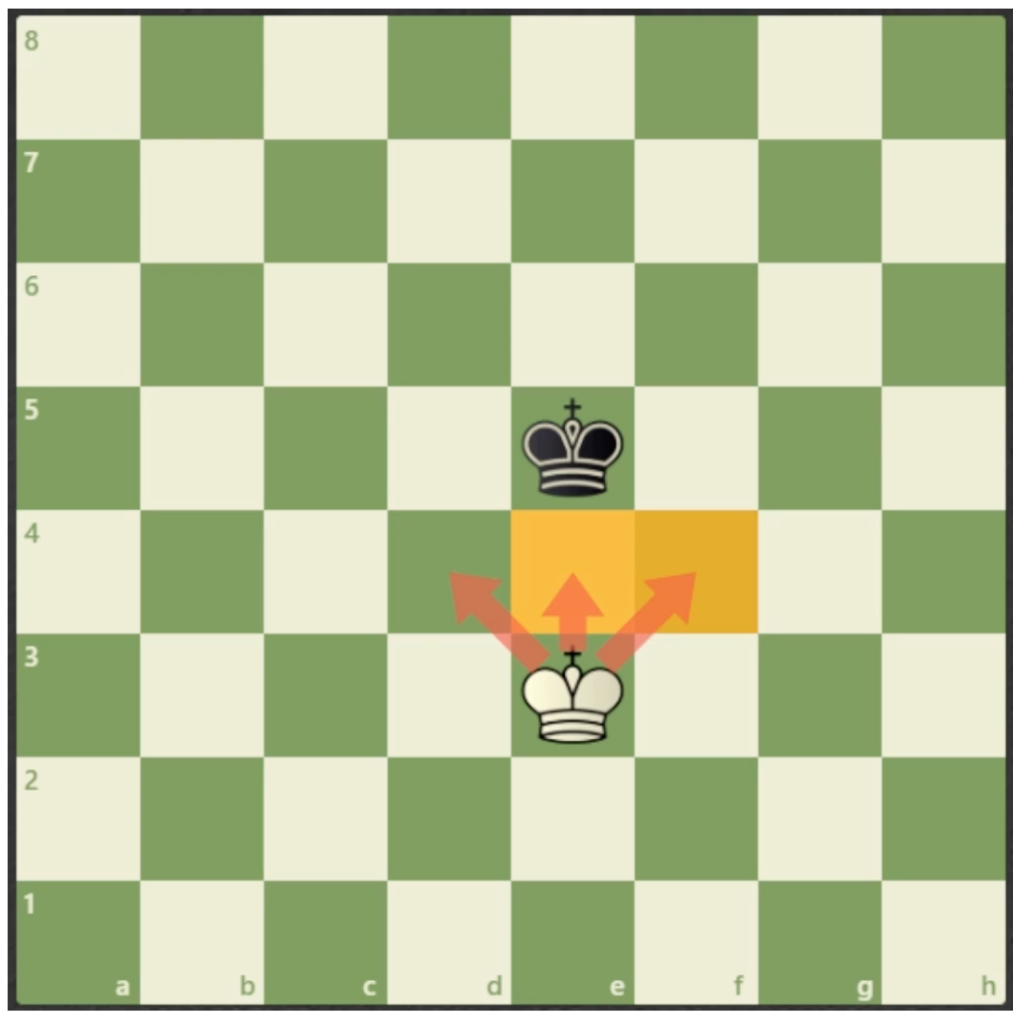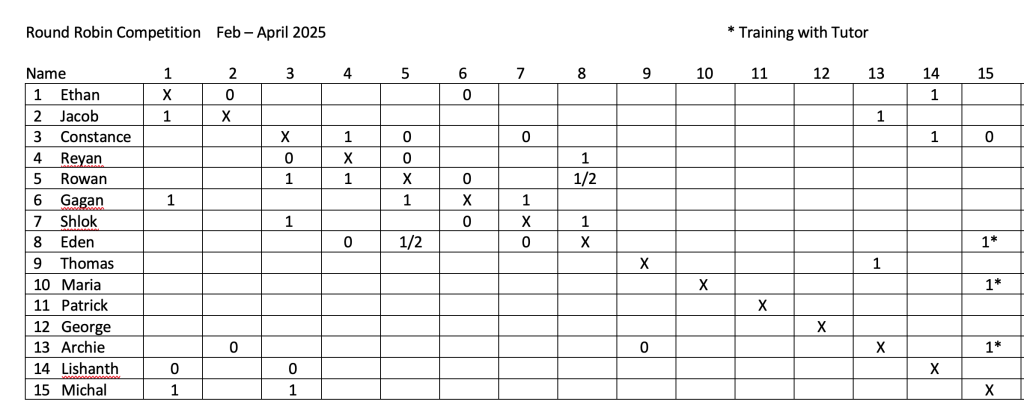
First session group enjoying a few games in the Round Robin competition with 10 minutes each on the clock.
12 juniors today on this the first day of spring and we welcome new member Michal to the club. Main topics today covered on the large demonstration board were the Stonewall Attack and the intricacies of the Opposition rule.
The Stonewall Attack is a straightforward and versatile opening for white, ideal for players aiming to reach a 1500 rating.
The Stonewall Attack is similar to the London opening that I have already shown to some of you,(view openings page for refresher) it begins with either 1. d4 or 1. f4, followed by 2. e3 (or 2. Nf3 if f4 had been played), which breaks the principle of not blocking in your bishop, but for a specific purpose. The goal is to develop the bishop to d3 and then play f4, creating a characteristic zigzag pawn structure (c3, d4, e3, f4) that supports a strong centre and prepares for a kingside attack.
The Stonewall is easy to learn and scales well for players from beginner to advanced levels. It offers a clear plan in the middle game, often involving a rook lift (e.g., Rf3, then Rh3) to launch an attack on the kingside, especially if black castles there. The opening is both positional and tactical, allowing for flexible play styles. It also provides a solid grip on the e5 square, making it hard for black to challenge white’s central control.
For different black responses, such as …d5 or …Nf6, the Stonewall setup remains largely the same, providing consistency and ease of learning. The key moves and ideas include playing c3 to support the d4 pawn, developing the knights to f3 and d2, and preparing for a potential e4 push against setups like the King’s Indian Defense. This opening minimizes the need for extensive memorization and provides a solid foundation for improving players.
Play this opening for at least 10 games to get comfortable with the typical positions and plans. I recommend also saving the moves for reference and study. Focus on developing a consistent structure, understanding the typical plans, and executing tactical opportunities.
Opposition
Let’s talk about opposition in chess, particularly its importance in the endgame. Opposition is when one king moves directly in front of the other, forcing the opposing king to move to the side or backwards.

This concept is crucial for advancing your position and is often used when you have a king and pawn trying to promote the pawn to a queen. By gaining opposition, you can force the opposing king to give way, allowing your pawn to advance and eventually promoting it.
White to Play
For example, if it’s your turn to move and your king is directly in front of the opponent’s king, the opponent must move to the side or back for you to continue advancing. This tactic can be used to escort a pawn to promotion, ensuring victory. If the opponent’s king tries to stop your pawn, gaining opposition allows you to outmanoeuvre them and create a path for your pawn.
Black to play
Opposition is also critical in defending against a pawn’s promotion. By moving directly back when the pawn advances, you can maintain opposition and block the pawn’s path, forcing a draw if done correctly.
This is especially effective with flank pawns, where the king can create a stalemate by moving to the corner. Understanding and utilizing opposition can significantly enhance your endgame strategy, enabling you to convert winning positions.

Wins today for Constance, Michal, Ethan, Jacob, Rowan, Gagan and Shlok. A good drawn game between Eden and Rowan.
Early days but 6 year old Gagan remains unbeaten, he certainly demonstrates he has a good chess brain.

Hopefully I'll see you all again next week, in the meantime, enjoy the sunny weather we've been promised and keep playing chess!
Graham Morris